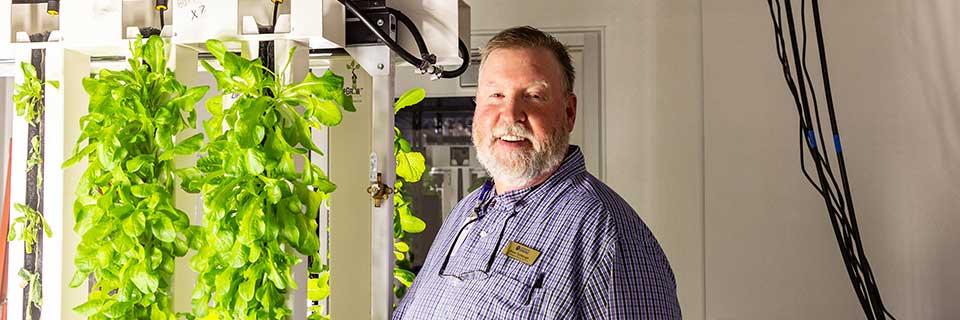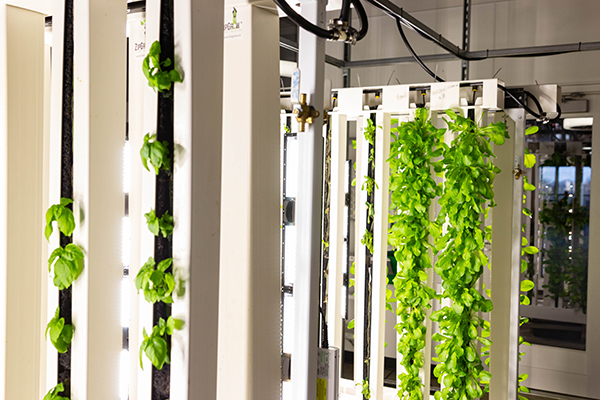Hydroponics Grow Room Contributes to the Caf and Sustainability

There was a unique addition to the Thomas More Dining Hall that may have caught your eye this year. Renovations to the dining hall during the summer of 2021 brought with it the introduction of a hydroponics grow room offering an alternative to soil gardening.
Hydroponic gardens produce more plants quickly with less space and less water than soil gardening. This system utilizes nutrient-rich water and recycled soda bottles as a mesh-type medium that serves as the soil alternative to support the roots of the plants in grow towers.
Bruce Turnbough, senior director for Dining Services at Rockhurst, got the idea for a hydroponics grow system after seeing it in action on a trip to Missouri State University a few years ago.
“I always thought it was a cool concept," he said. "I wanted to bring something like that here because of the sustainability piece, and so the students can see that some of their food is produced here.”
Currently, the grow room holds 32 towers that grow a variety of produce such as buttercrunch lettuce, romaine lettuce, kale, chives, cilantro, and basil.
The process starts with the seedlings, which are started in-house and then transplanted into the towers at around two weeks old. Once in the tower, nutrient-rich water is pumped into the medium that trickles down and then recirculated through the tower. With this process, produce can go from seed to service in about seven weeks. The lights in the grow room simulate sunrise and sunset and are on 18 hours a day. This provides an experience for growth from the seedling stage all the way to the flowering stage that simulates what traditional soil gardening would look like.

One of the goals of the grow room is to produce enough from the garden to use its produce in Chartwell’s catering services, according to Turnbough. The grow room is run in conjunction with the health department, which inspects the produce and ensures it is acceptable to use within the dining services operation.
To keep the operation successful and growing, there are specific guidelines and tasks those involved must follow.
“There's a fine line when adding nutrients to the barrel, Turnbough said. "If you add too much, then you're going to burn or kill plants, and if you don't add enough then they're going to starve.”
Zoe Clark, a biochemistry, Spanish, bioethics, pre-med senior was the first student to show interest in the grow room before it found its home in the new space in TMDR.
“I remember when Bruce started getting the equipment for the grow room, and I immediately knew I had to be a part of it,” Clark said.
Clark does most of the upkeep in the system through Turnbough’s direction, which includes everything from planting the seedlings, transplanting to the grow towers, cleaning and sanitation of the system, any maintenance of the system, as well as 80% of the harvesting from the towers.
“It has given me the chance to keep doing what I love," she said. "Bruce gives me artistic liberty to take care of the grow room and it has been a fun journey towards sustainability at Rockhurst.”
Clark and Turnbough were successful in harvesting produce out of 28 of the 32 towers on a consistent basis in its first semester of operation.
As for expanding the current hydroponics grow room, Turnbough mentioned additional opportunities available for the space.
“I’d love to add more to the space," he said. "There are some opportunities for bucket systems that work off the same principle, just out of five-gallon buckets. So yes, there is some space for growth.”







